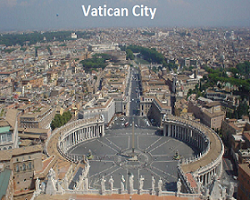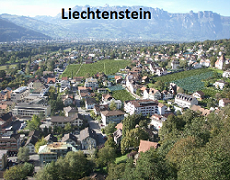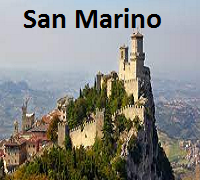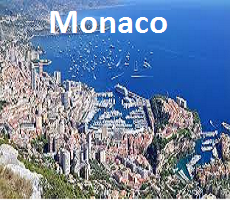Countries without Airports: Airports and air travel are in high demand due to the short duration of time that is required to travel from one place to another. Due to air travel, a distance can be compressed into 3–4 hours instead of 10–12 hours.
Once upon a time, sitting on an airplane used to be a big deal for people. Earlier, most wealthy people could afford to travel by plane, but this is no longer the case. People can now enjoy air travel at reasonable prices. There are many such airports in India that are known for their luxurious beauty. Here, we are providing a list of some countries that do not have airports in the world. It may be that heliports may replace the functions of various airports in these areas. Take a look!
READ| What is Black Box in an Aircraft, how does it work, and its significance in a crash investigation?
List of countries in the world that do not have airports
1. Vatican City

It is a sovereign microstate located in Rome. It is the world's smallest microstate in terms of both land area and population. It is situated on the west bank of the Tiber River. St. Peter's Basilica is the most imposing building that was built in the 4th century and rebuilt during the 16th century. It is erected over the tomb of St. Peter the Apostle, which is the second-largest religious building in Christendom. The residence of the pope is the Vatican palace within the city walls. It is a theoretic state under the pope. It has its own telephone system, post office, gardens, astronomical observatory, radio station, banking system, and pharmacy, and also a contingent of Swiss Guards, which has been responsible for the personal safety of the pope since 1506. It does not have an airport but has a heliport that is used by city officials and visiting heads. The nearest airports are Rome–Ciampino Airport and Rome–Fiumicino Airport in Italy.
READ| List of richest countries in the world 2022
2. Liechtenstein

It is a western European principality that is located between Switzerland and Austria. Its capital is Vaduz, and it is one of the smallest countries in Europe. Its highest peak is the Grauspitz. Its climate is mild and is greatly affected by the warm southerly wind called the foehn. It has a remarkable variety of vegetation. Liechtenstein is a constitutional monarchy. Its head of state is the prince. It has no natural resources of commercial value and all raw materials, including wood, have to be imported. The Swiss franc is its currency, and it joined a customs union with Switzerland in 1923. Liechtenstein does not have an airport but has a network of excellent roads connecting it with its neighbours. The railway is part of the Paris-Vienna express route that passes through the northern sections of the country. It has a heliport in Balzers.
3. Andorra

Its capital is Andorra la Vella, and it is a small, independent European country. It is situated among the southern peaks of the Pyrenees Mountains. To the north and east, it is bounded by France and to the south and west by Spain. It is also one of the smallest states in Europe. It consists of a cluster of mountain valleys, and its streams unite to form the Valira River. The Madriu and the Perafita are two of these streams that flow into the Madriu-Perafita-Claror valley. In 2004, the valley was designated a UNESCO World Heritage Site.
Its official language is Catalan. Also, Spanish and French are spoken. Its institutions are based on Catalonian law. Large portions of the Spanish immigrants or their descendants in Andorra are Catalan. Most of the Andorrans are Roman Catholic. Andorra has three heliports but no airport. The nearest airports in Spain include Andorra—La Seu d'Urgell Airport, which is 12 km away, Lleida-Alguaire Airport, Barcelona-El Prat Airport, and Girona-Costa Brava Airport. In France, the nearest airports include Carcassonne Airport, Perpignan–Rivesaltes Airport, and Toulouse-Blagnac Airport. There is no railway system in Andorra, but good road links link it with France and Spain. In 1997, the University of Andorra was established. Andorra concluded a monetary agreement in July 2011 with the EU that made the euro its official currency, although the government of Andorra was not granted the power to issue its own euro banknotes.
4. San Marino

Its capital is San Marino, and it is a small republic situated on the slopes of Mount Titano. After the Vatican and Monaco, it is the smallest independent state in Europe. Mount Titano and the historic centre of San Marino were designated UNESCO World Heritage Sites in 2008. The official language is Italian. The main resources of the country are industry, tourism, commerce, agriculture, and crafts. San Marino replaced the Italian lira with the euro as its national currency in 2002. Tourism is a major contributor to the inhabitants' income.
If we talk about the network, then roads connect San Marino with the surrounding regions of Italy. San Marino city is connected with Rimini, Italy, and, in summer, directly with the Adriatic coast via motorcoach services. It also has no airport but has one heliport in Borgo Maggiore and a smaller airfield. The Federico-Fellini airport in Italy is the closest. It does not have a railroad, but the capital can be reached from Borgo Maggiore due to a cable railway.
5. Monaco

It is one of the most luxurious tourist resorts in the world. It is located along the Mediterranean Sea in the midst of the resort area of the Cote d’Azur (French Riviera). Various visitors came to enjoy the beaches and boating facilities. International sports-car races and the world-famous Place du Casino, which serves as the gambling centre in the Monte-Carlo section, have made the city an international byword for the extravagant display and distribution of wealth.
Monaco has no airport but has a heliport in the district of Fontvieille. The nearest airport is in France, named Nice Cote d'Azur airport. Monaco's major industry is tourism. Its official language is French.
Source: worldatlas
READ| List of Visa Free Countries for Indian Passport Holders 2022: Check here
Comments
All Comments (0)
Join the conversation